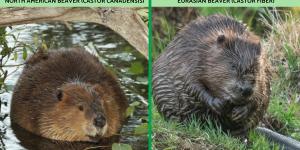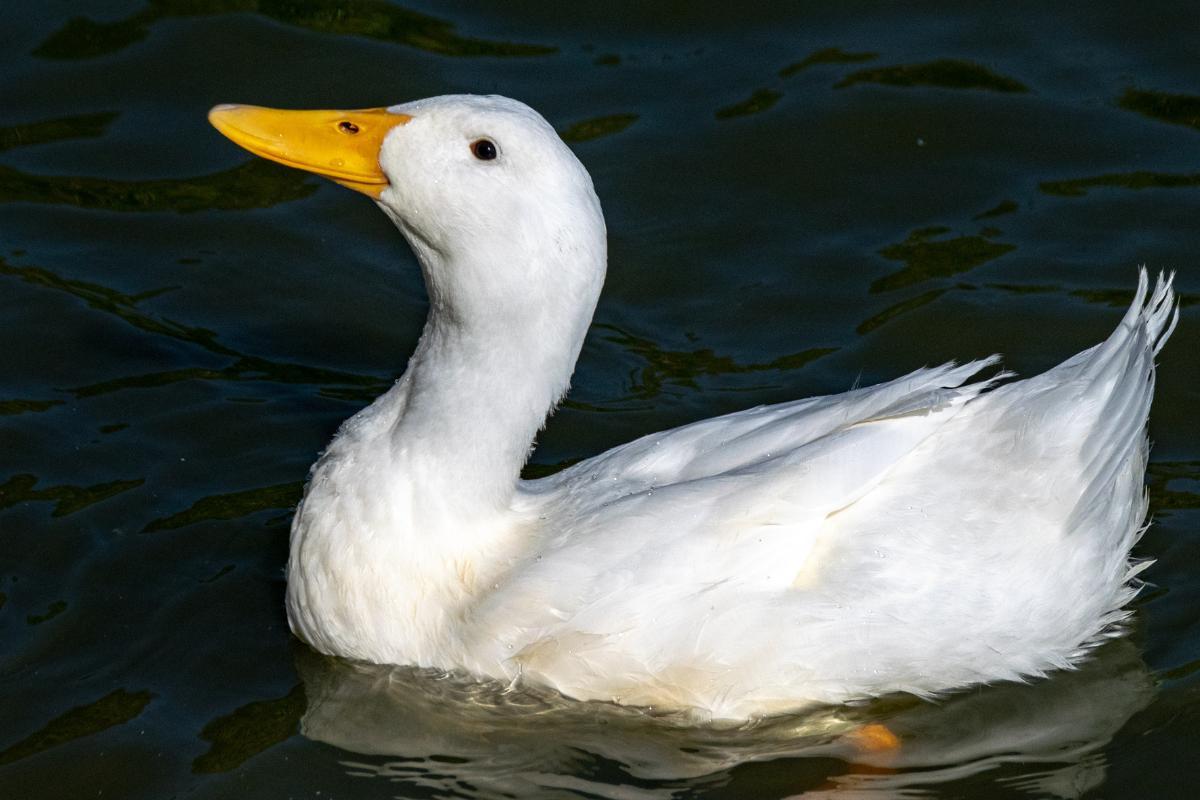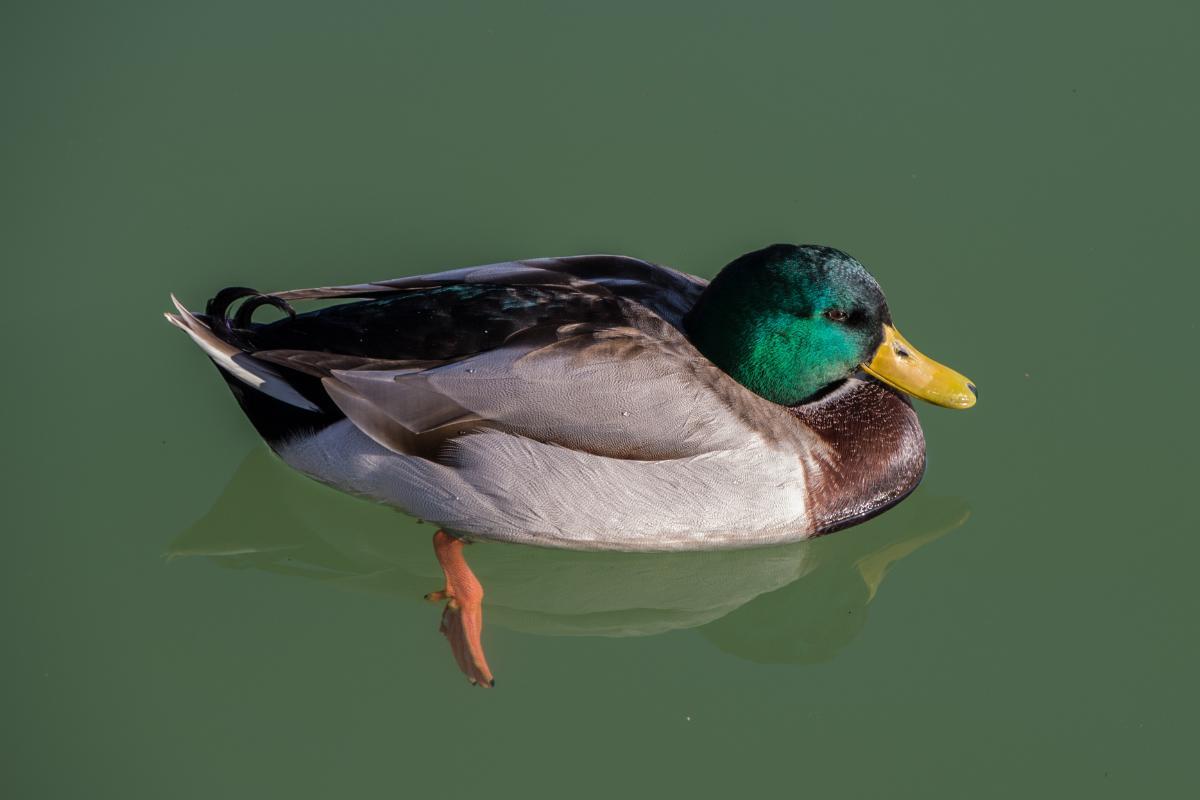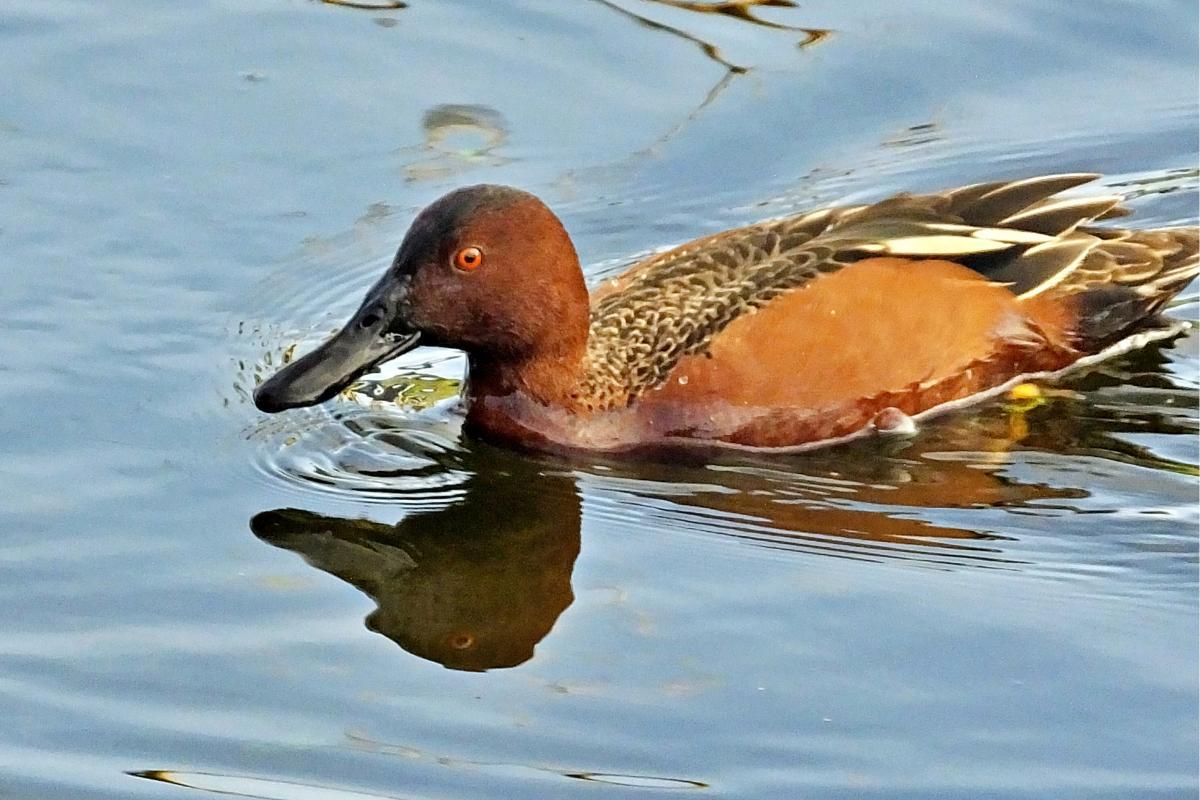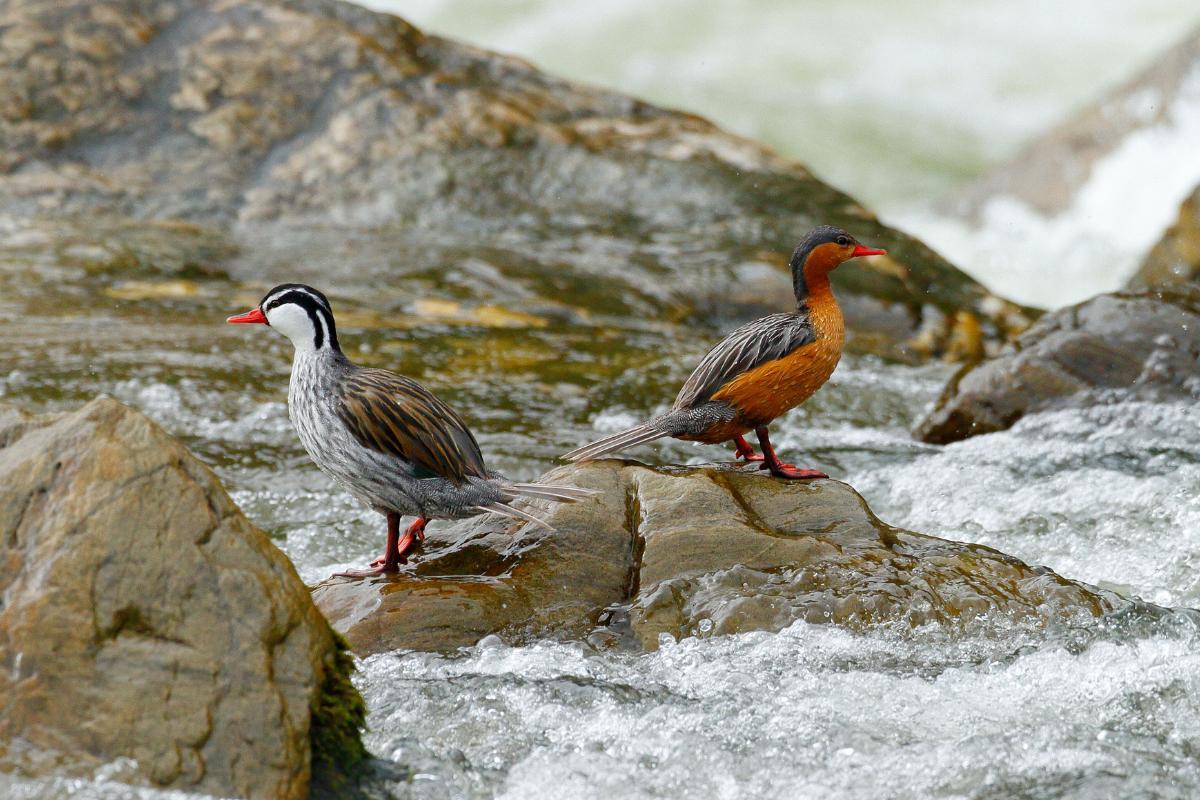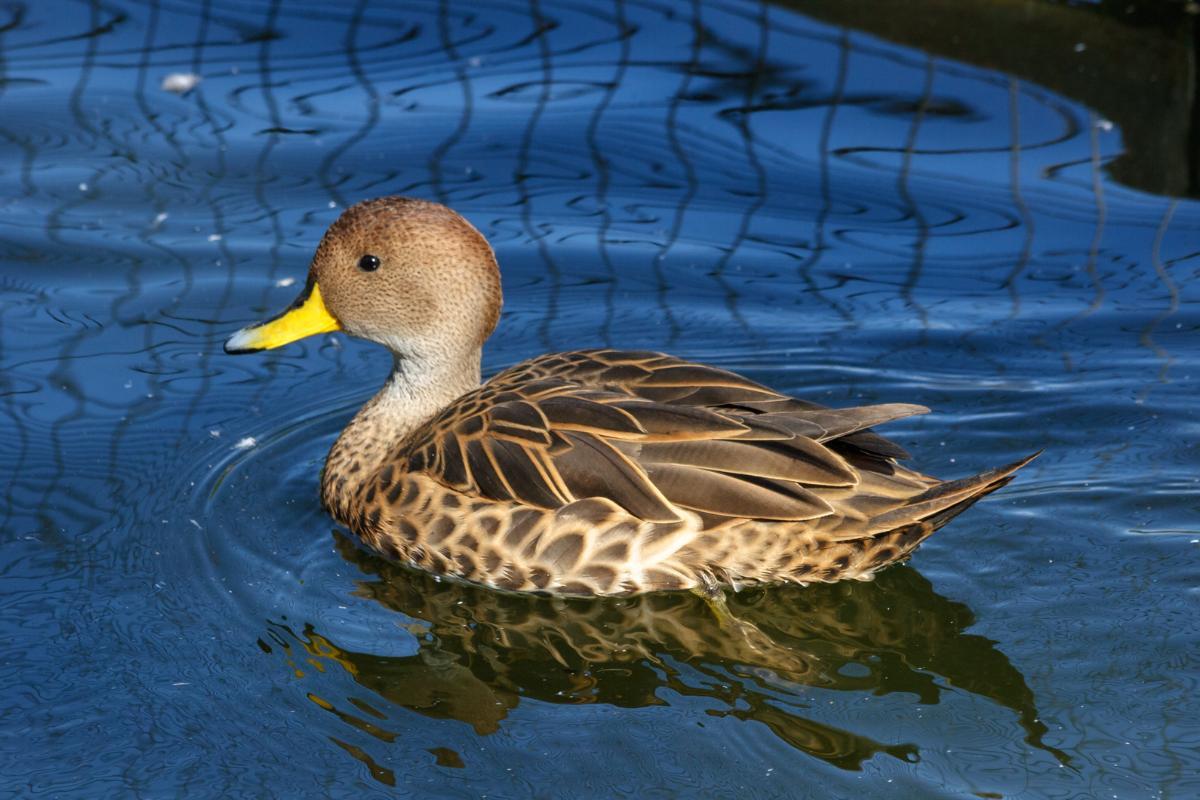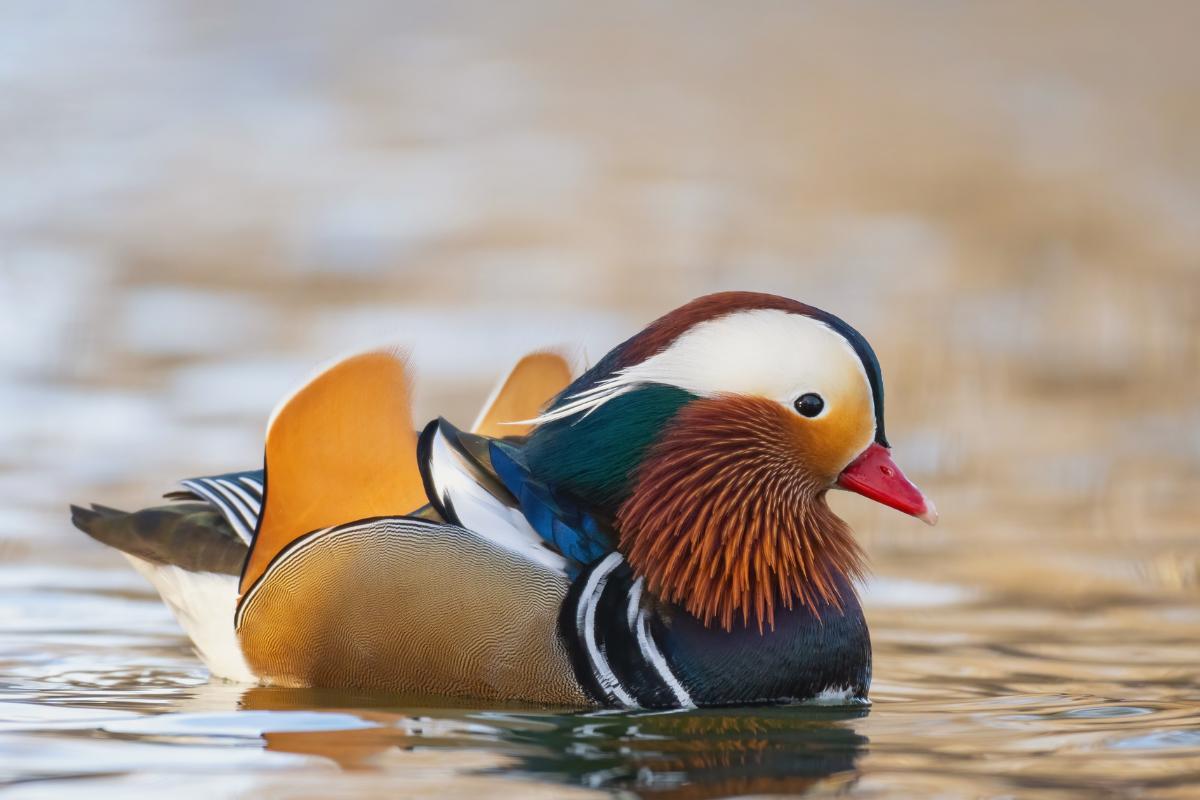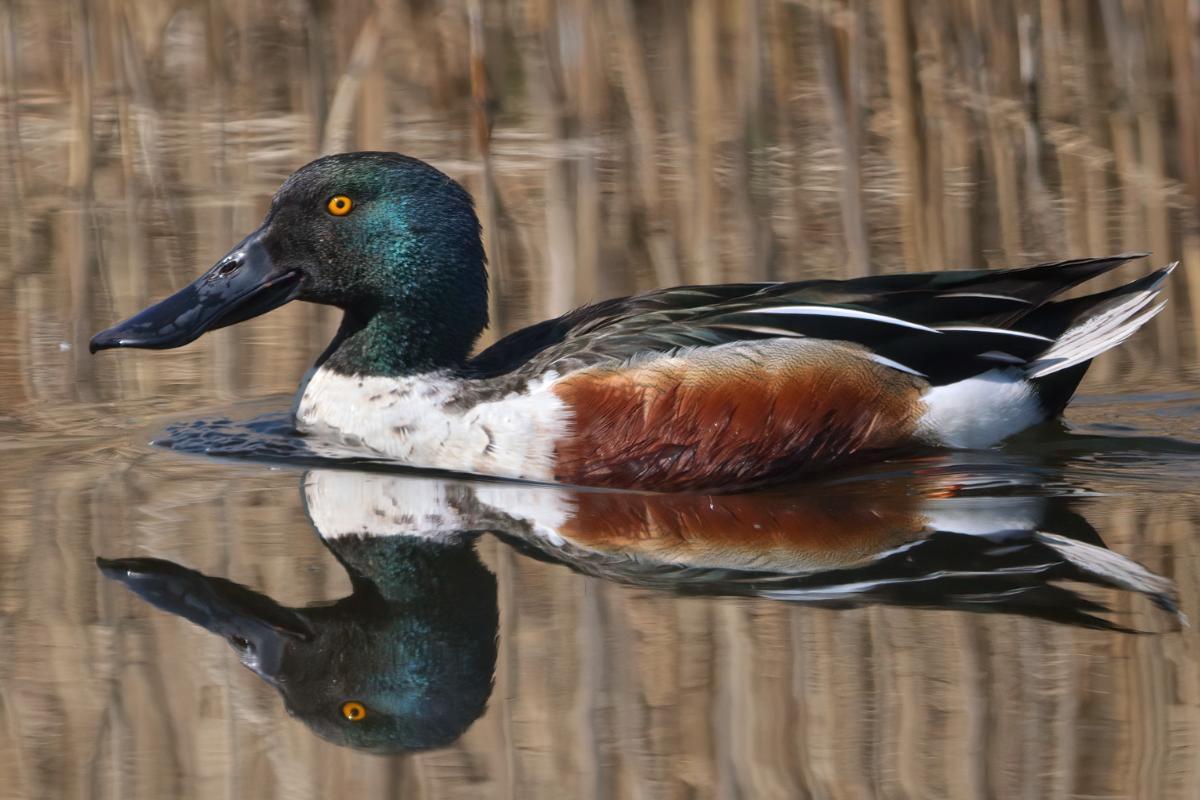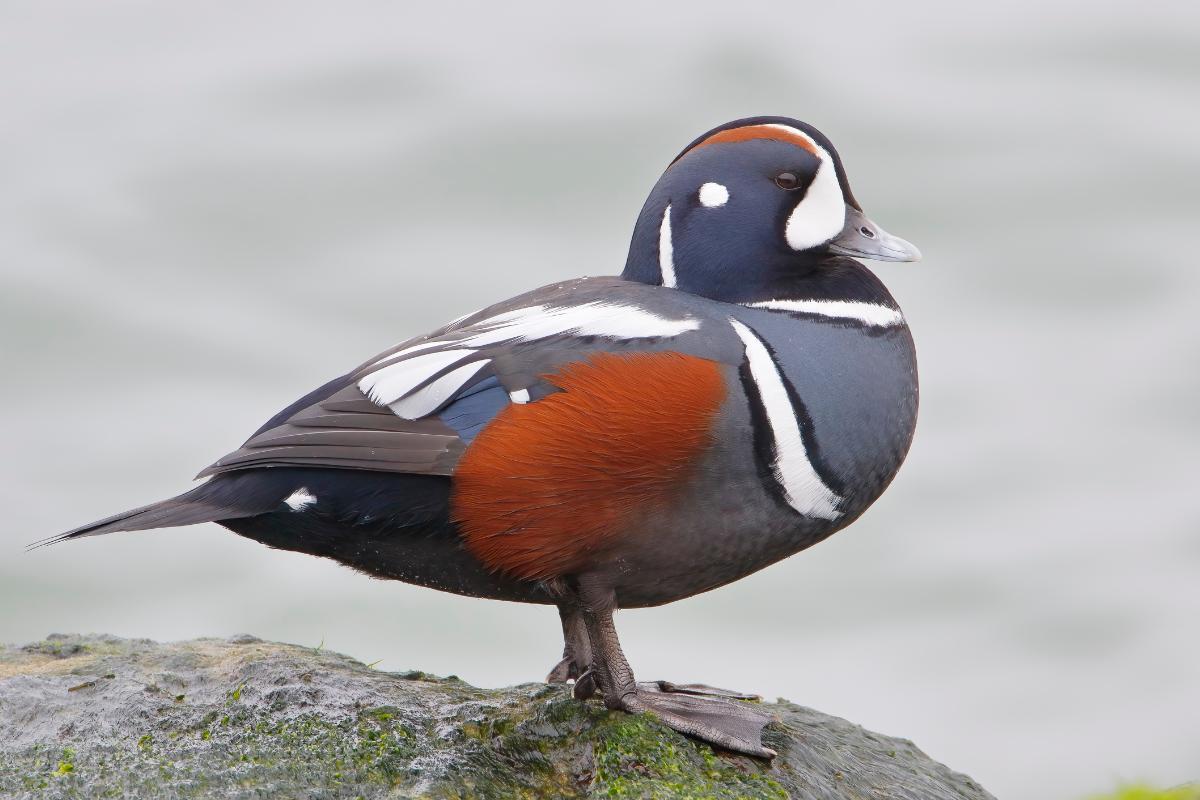Different Types of Ducks


Ducks are versatile and widespread waterfowl that inhabit a diverse range of environments across the globe. With over 120 species identified, they can be found in nearly every part of the world, from serene lakes and rivers to bustling estuaries and marshes. Ducks vary significantly in size, color, and behavior, reflecting their adaptation to different habitats and lifestyles.
In the following article by thedailyECO we explore 15 different types of birds, along with their main characteristics, fun facts and photos.
- Domestic duck (Anas platyrhynchos domesticus)
- Mallard (Anas platyrhynchos)
- Cinnamon teal (Spatula cyanoptera)
- Torrent duck (Merganetta armata)
- Chiloe wigeon (Anas georgica)
- Mandarin duck (Aix galericulata)
- White-faced whistling duck (Dendrocygna viduata)
- Common shoveler (Spatula clypeata)
- Blue-billed duck (Oxyura australis)
- Yellow-billed Teal (Anas flavirostris)
- Black duck (Anas rubripes)
- Muscovy duck (Cairina moschata)
- Harlequin duck (Histrionicus histrionicus)
- Spotted duck (Stictonetta naevosa)
- Red sirirí (Dendrocygna bicolor)
Domestic duck (Anas platyrhynchos domesticus)
Commonly known as the domestic duck, it is a subspecies derived from the wild mallard (Anas platyrhynchos) through selective breeding by humans. Domestication of the Mallard for agricultural purposes has been practiced for millennia, with evidence suggesting its origins in ancient Egypt. Initially bred for meat production, the domestic duck is now also kept as a pet by some people.
This domesticated duck is distinguished by its white plumage, bright orange beak, and legs, and typically weighs between 3 to 4 kilograms (6.6 to 8.8 pounds).
The adaptability and docile nature of the domestic duck have contributed to its widespread acceptance in various agricultural settings.

Mallard (Anas platyrhynchos)
The mallard (Anas platyrhynchos), also known as the collared duck, is a widespread species in temperate regions of the northern hemisphere and has been introduced to Australia and New Zealand. As a migratory bird, it typically heads south for the winter, finding habitats in Central America and the Caribbean.
The male mallard is easily recognizable with its vibrant green head and neck, complemented by a distinctive white collar stripe. In contrast, the female has more subdued brown and cream plumage. Mallards are known for their ability to imitate a variety of sounds, including the calls of other bird species and even human noises.
Mallards are often seen in large flocks and can be found in shallow fresh or saltwater bodies, as well as in urban parks. Mallard flocks exhibit intricate social hierarchies, with dominant individuals often controlling access to resources and mates. Being generalist omnivores, they consume a wide variety of food items.

Cinnamon teal (Spatula cyanoptera)
The cinnamon teal (Spatula cyanoptera) is a species native to the Americas, with a range that extends from southern Canada to Tierra del Fuego in Argentina, including the Falkland Islands.
Males are notable for their rich reddish-brown plumage and red irises, while females are more subdued in tan coloring. Both sexes have a black beak. Like other dabbling ducks, the Cinnamon Teal feeds by tipping its body forward to reach underwater vegetation. However, they're also adept at diving for food.
Cinnamon teals inhabit freshwater bodies and coastal marine environments, often nesting near water in areas with minimal vegetation. They can lay up to 10 eggs per clutch. Their diet is omnivorous, consisting of plants, seeds, insects, and mollusks.
Want to learn more about how beak shapes enhance bird survival? Check out our in-depth exploration of this topic in this other article.

Torrent duck (Merganetta armata)
The torrent duck (Merganetta armata) is a species native to the cold, rushing streams and rivers of mountainous regions in South America, with a range extending from Venezuela to Tierra del Fuego in Argentina.
This duck is known for its marked sexual dimorphism: males are strikingly black and white, while females are more subdued in gray and tan. As its name suggests, this duck is a master of fast-flowing rivers. It's equipped with webbed feet and specialized feathers that allow it to navigate turbulent waters with ease.
Torrent ducks are generally solitary or found in pairs. They feed on insects and mollusks and nest under rocks, where they lay 3 to 4 eggs per clutch.

Chiloe wigeon (Anas georgica)
The Chiloe wigeon (Anas georgica), also known as the corn duck, inhabits the coasts of lakes, lagoons, rivers, and wetlands throughout South America. It is found in a range of environments from humid forests to steppes. The male has ocher-brown plumage, a yellow beak, and gray legs.
This species feeds on a diet of invertebrates, plant matter, and grains (which contributes to its common name). It typically nests in depressions on the ground, constructing its nest from grass and feathers.
Chiloé Wigeons form strong pair bonds, often remaining together for multiple breeding seasons.

Mandarin duck (Aix galericulata)
The mandarin duck (Aix galericulata), originally native to central Asia, has successfully naturalized in several European countries. Though they prefer wooded ponds and streams, Mandarin Ducks are skilled swimmers and divers, thanks to their webbed feet.
Males are particularly striking with their vivid and elaborate plumage, which includes a mix of bright colors and intricate patterns. In contrast, females have more subdued brownish tones.
The diet of the mandarin duck primarily consists of nuts and seeds, as well as plants and aquatic invertebrates. These ducks often nest in tree cavities, a unique adaptation that helps protect their young from predators.
Curious about the science behind bird classification? Learn how various species, including ducks, are systematically organized in our detailed article.

White-faced whistling duck (Dendrocygna viduata)
The White-faced Whistling Duck (Dendrocygna viduata), also known as the sirirí pampa, is native to both the American and African continents. Its common name derives from its distinctive call, which sounds like "sirirí, sirirí."
Males and females are nearly identical in appearance. They have a white face and body plumage that varies in shades of brown, with black and white barring on the flanks. Whistling ducks are typically found in large groups and are most active during twilight hours.
They are sedentary and prefer brackish water lagoons, lakes, rivers, and estuaries, often in shallow areas with abundant tall grasses. They are highly social, often forming large flocks. Primarily nocturnal, they feed at night and rest during the day. They nest in colonies, building nests in vegetation near water. Both parents share incubation and chick-rearing duties.

Common shoveler (Spatula clypeata)
The common shoveler (Spatula clypeata) is a migratory duck found across North America, Europe, and Asia. This species is easily recognizable by its distinctive wide, flat beak, which it uses to filter water for food, including plankton, insects, crustaceans, and seeds.
Males are particularly striking with their iridescent green head, white breast, and brown flanks. In contrast, females are more subdued, with mottled brown plumage that provides effective camouflage. However, the shoveler's most striking feature is its wide, flat bill, which it uses to strain small aquatic organisms from the water.

Blue-billed duck (Oxyura australis)
The blue-billed duck (Oxyura australis), also known as the blue-billed teal, is a distinctive species native to Australia. It is found in a range of wetland habitats, including freshwater lakes, swamps, and marshes.
Males of the species are particularly striking, characterized by their bright blue bill, which contrasts sharply with their dark brown body and pale underparts. Their plumage also includes subtle patterns of black and white, making them easily recognizable. Females, on the other hand, have a more muted appearance with mottled brown plumage that provides effective camouflage.
The blue-billed duck is a diving duck, often seen diving below the water's surface to forage for food, which includes aquatic plants, insects, and small crustaceans. This species is generally sedentary, remaining within its preferred wetland habitats year-round.

Yellow-billed Teal (Anas flavirostris)
The yellow-billed teal (Anas flavirostris) is a species native to South America, with its range extending through Argentina, Chile, and the Falkland Islands. During the winter months, it may migrate to regions in Uruguay and Brazil.
This species is noted for its distinctive yellow beak and bears a resemblance to the corn duck (Anas georgica), though it differs by having a shorter neck and tail. Unlike some other duck species, the Barcino duck does not exhibit sexual dimorphism; males and females have similar plumage.
It inhabits various aquatic environments, including lakes and wetlands, and can be found at altitudes of up to 4,400 meters (14,400 feet) above sea level. While primarily herbivorous, feeding on aquatic plants, seeds, and invertebrates, the Yellow-billed Teal has been known to consume small fish and insects.

Black duck (Anas rubripes)
The black duck (Anas rubripes) is native to North America, particularly in areas around the Great Lakes and the Adirondack Mountains. This species is distinguished by its dark plumage with a bluish sheen on its wings.
Black ducks primarily feed on aquatic plants, insects, and crustaceans found in shallow waters. They are known to interbreed with the closely related mallard (Anas platyrhynchos), often producing hybrids. This interbreeding is relatively common due to the close genetic relationship between the two species.

Muscovy duck (Cairina moschata)
The muscovy duck (Cairina moschata), sometimes referred to as the musky duck, is native to Central and South America but has been domesticated and is now found in many parts of the world.
Unlike most ducks, Muscovy ducks lack the characteristic duck-like bill and possess fleshy growths around their beaks. They also have a larger size and a more terrestrial nature compared to other ducks.Unlike their noisy Mallard cousins, Muscovy ducks are relatively quiet birds, often emitting soft whistles or grunts.
Muscovy ducks have a varied diet that includes plants, seeds, small fish, and invertebrates. They are commonly seen perched on tree branches near bodies of water, where they forage and rest.
There are two recognized subspecies: Cairina moschata domestica, the domesticated form, and Cairina moschata sylvestris, the wild form.

Harlequin duck (Histrionicus histrionicus)
The harlequin duck (Histrionicus histrionicus) is renowned for its striking and distinctive plumage, which sets it apart as one of the most visually remarkable duck species. It is the sole member of its genus, and currently, two subspecies are recognized: Histrionicus histrionicus histrionicus and Histrionicus histrionicus pacificus.
Male Harlequin Ducks exhibit a stunning array of colors, including iridescent green, white, black, and chestnut. Females are more subdued but still retain distinctive markings.
This species inhabits the cold, turbulent waters of rivers, lakes, and fast-flowing streams across northern North America, southern Greenland, eastern Russia, and Iceland. Their diet varies seasonally, with insects and their larvae being the primary food source during breeding, while crustaceans and mollusks become more important in winter.
Curious about the eating habits of different duck species? Dive into how ducks forage and feed in our detailed guide.

Spotted duck (Stictonetta naevosa)
The spotted duck (Stictonetta naevosa) is the sole species within its genus and the subfamily Stictonettinae. Native to South Australia, this duck is currently protected by law due to a decline in its population, primarily caused by habitat destruction.
Physically, the spotted duck is a moderately large bird with a robust head and a distinctive pointed crown. Its plumage is dark, adorned with numerous small white spots that give it a unique appearance. It has a narrow, slightly upturned bill, which sets it apart from other duck species.
Although it is capable of flight, it is somewhat clumsy when landing.

Red sirirí (Dendrocygna bicolor)
The red sirirí (Dendrocygna bicolor), also known as the fulvous whistling duck, is distinguished by its striking plumage, which features a mix of brown and reddish tones. This species has a dark beak and legs, contributing to its distinctive appearance.
The red sirirí inhabits humid and swampy areas across the Americas, from the United States to Argentina. It primarily feeds on aquatic plants, seeds, and small insects. This social duck is often seen in large flocks and is known for its distinctive whistle, which can be heard during flight.
If you enjoyed learning about duck diversity, you'll find it intriguing how these birds manage without teeth. Explore their unique feeding mechanisms in our follow-up article.

If you want to read similar articles to Different Types of Ducks, we recommend you visit our Wild animals category.
- National Audubon Society. Bird guide. Ducks and Geese. Available at: https://www.audubon.org/es/guia-de-aves
- IUCN (2024). The IUCN Red List of Threatened Species. Available at: https://www.iucnredlist.org


